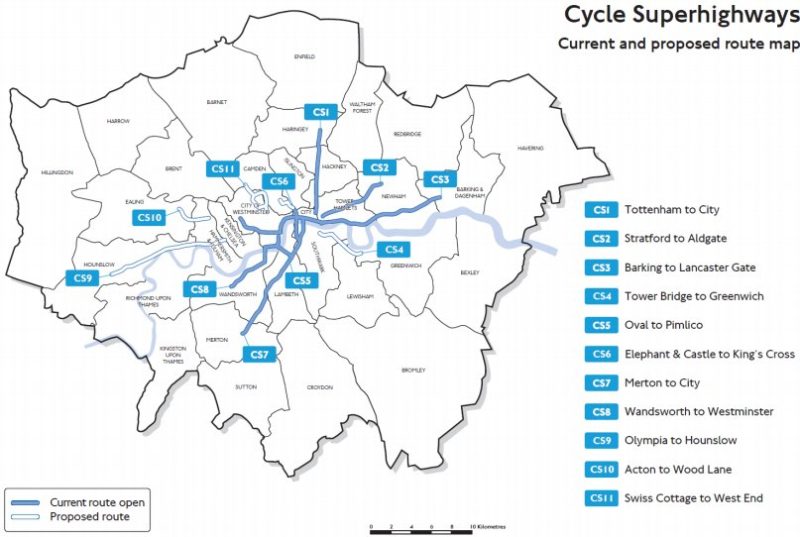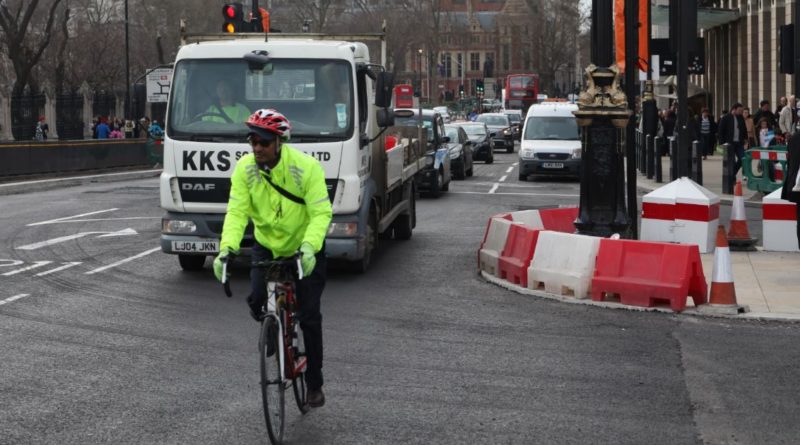Political will to cater for cycling as important as increased funding, concludes Transport Select Committee
This morning’s Transport Select Committee meet at the London Assembly has concluded that political will may well be as big a barrier to building safe cycling infrastructure as poor levels of funding currently allocated to active travel.
Sat on today’s expert panel, Dr Rachel Aldred of the University of Westminster in part blamed cycling’s often stigmatised public image as having too much political influence.
“There is not necessarily a single baddie, but a paper I’ve written previously found that many consider that you have to be a bit brave to cycle and that quickly turns cycling into a marginalised activity and one deemed by many to be for the eco-warrior. That creates undue hostility which simply doesn’t exist elsewhere in Europe.
“Political will is often therefore the biggest barrier, perhaps even more so than financial constraints. In respect of London there are varying levels of support within TfL and within the boroughs. We haven’t yet managed to mainstream cycling across the board.”
Aldred’s comments in today’s sitting on inclusive cycling are echoed in a piece now readable in CyclingIndustry.News’ latest digital magazine.
The notion that political will is stalling progress was echoed by Sustrans’ Matt Winfield who pointed to public support for cycling not translating into political action.
“Typically we see 60+% in favour of cycling infrastructure. We know it’s popular, but politically it can be painful to push through progress. In one trial we went from an initial 30% public support to 60% in favour of keeping safe cycling provision once the trail had run,” offered Winfield.
Chris Boardman, Greater Manchester’s Walking & Cycling Commissioner, said that “political courage was needed to upset the status quo” and that “if we were looking solely at the evidence for progress, it should be the car lobby fighting to keep road space, not cycling trying to gain it.”
Echoing Aldred’s earlier comments he said: “Negative news surrounding cycling unfortunately spreads disproportionately, so politically cycling is treated with caution. The DfT in particular I’ve found to uncomfortable with upsetting the status quo and we have to push quite hard for progress.

“There are some very obvious quick wins that we can fight for. British Cycling’s Turning the Corner campaign, for example, would bring us more in line with the rest of Europe. This has been demonstrated to deliver efficiencies for all road users, including a 47% enhanced efficiency for motor traffic.”
Furthering the call for political leadership, Simon Munk of the London Cycling Campaign offered: “TfL have too often been unwilling to remove road space from cars and as a result we often see big delays in schemes. The Mayor’s pledge to triple cycling infrastructure is welcome, but downward pressure needs to be applied to move projects beyond the initial obstacles.
Under scrutiny was the difference between London’s first phase painted infrastructure, quietways and fully segregated paths.
One startling stat put forward by Aldred outlined that outer London boroughs are seeing KSI rates of up to seven times that of inner London, lending weight to the notion that safe infrastructure needs to be further expanded upon.
On Mini Holland style schemes Aldred said: “We’re finding stronger results within boroughs with modal filtering in place to deliver a propensity to walk or cycle.”
“TfL’s Strategic Cycling Analysis has validated what we’re seeing in that of the top 25 corridors for cycling there are routes not just going in and out of London. We have a map now to counter all arguments that ‘there’s no demand for cycling in our borough’,” added the LCC’s Munk.

With both CS4 and CS9’s consultations having run their course at the tail end of 2017, Boardman questioned whether political differences may have caused London to suffer as former mayor Boris Johnson left office making way for Sadiq Khan.
Suggesting that a brief hiatus may well be a generous way to describe the slowdown in superhighway progress, Boardman said: “The current administration didn’t take input from previous lessons and so have encountered many of the same problems. Regrettably, Andrew Gilligan was not consulted by the current administration. I would hope this wasn’t a party political thing. We plan to use his knowledge in Manchester.”
Giving evidence Aldred outlined that one Canadian study found that just a ninth of the injuries were reported on one stretch of segregated cycling infrastructure than occurred pre-build. In particular Aldred’s recent research was said to have found that streets that have seen traffic calming have made a significant safety and usage impact for vulnerable road users, in particular those with disabilities.
In reference to Quietway One, said to be the only route currently producing reliable data, a 56% increase has been noted.
“There’s not as much evidence for quietways as for segregated infrastructure,” offered Aldred. “We need to set the bar high. If cycling with kids, my research has shown that parents much prefer to be cycling on routes separated from motor traffic.”
The benchmark, according to Chris Boardman, has to be “would a competent 12 year-old be comfortable cycling there. That’s the yard stick to allow funding to be released for projects for me.”
The Mayor of London has committed to invest £770 million in cycling between 2017 and 2022.
You can catch today’s discussion in full here.



